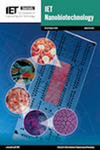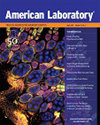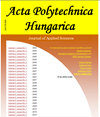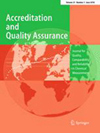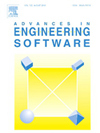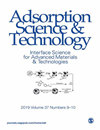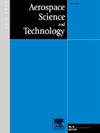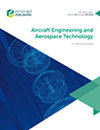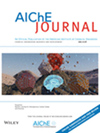期刊简介
Electrical and electronic engineers have a long and illustrious history of contributing new theories and technologies to the biomedical sciences. This includes the cable theory for understanding the transmission of electrical signals in nerve axons and muscle fibres; dielectric techniques that advanced the understanding of cell membrane structures and membrane ion channels; electron and atomic force microscopy for investigating cells at the molecular level.Other engineering disciplines, along with contributions from the biological, chemical, materials and physical sciences, continue to provide groundbreaking contributions to this subject at the molecular and submolecular level. Our subject now extends from single molecule measurements using scanning probe techniques, through to interactions between cells and microstructures, micro- and nano-fluidics, and aspects of lab-on-chip technologies. The primary aim of IET Nanobiotechnology is to provide a vital resource for academic and industrial researchers operating in this exciting cross-disciplinary activity. We can only achieve this by publishing cutting edge research papers and expert review articles from the international engineering and scientific community. To attract such contributions we will exercise a commitment to our authors by ensuring that their manuscripts receive rapid constructive peer opinions and feedback across interdisciplinary boundaries.IET Nanobiotechnology covers all aspects of research and emerging technologies including, but not limited to:Fundamental theories and concepts applied to biomedical-related devices and methods at the micro- and nano-scale (including methods that employ electrokinetic, electrohydrodynamic, and optical trapping techniques)Micromachining and microfabrication tools and techniques applied to the top-down approach to nanobiotechnologyNanomachining and nanofabrication tools and techniques directed towards biomedical and biotechnological applications (e.g. applications of atomic force microscopy, scanning probe microscopy and related tools)Colloid chemistry applied to nanobiotechnology (e.g. cosmetics, suntan lotions, bio-active nanoparticles)Biosynthesis (also known as green synthesis) of nanoparticles; to be considered for publication, research papers in this area must be directed principally towards biomedical research and especially if they encompass in vivo models or proofs of concept. We welcome papers that are application-orientated or offer new concepts of substantial biomedical importanceTechniques for probing cell physiology, cell adhesion sites and cell-cell communicationMolecular self-assembly, including concepts of supramolecular chemistry, molecular recognition, and DNA nanotechnologySocietal issues such as health and the environmentSpecial issues. Call for papers:Smart Nanobiosensors for Next-generation Biomedical Applications - https://digital-library.theiet.org/files/IET_NBT_CFP_SNNBA.pdfSelected extended papers from the International conference of the 19th Asian BioCeramic Symposium - https://digital-library.theiet.org/files/IET_NBT_CFP_ABS.pdf
电气 和 电子 工程 师 在 为 生物 医学 科学 贡献 新 理论 和 技术 方面 有 着 悠久 而 辉煌 的 历史 。这 包括 理解 神经 轴突 和 肌肉 纤维 中 电信号 传输 的 电缆 理论 ;介 电 技术 促进 了 对 细胞 膜 结构 和 膜 离子 通道 的 理解 ;在 分子 水平 上 研究 细胞 的 电子 和 原子 力 显微 镜 。 其他 工程 学科 以及 来自 生物 、 化学 、 材料 和 物理 科学 的 贡献 继续 在 分子 和 亚 分子 水平 上 为 这 一 学科 提供 开创 性 的 贡献 。我们 的 课题 现在 从 使用 扫描 探针 技术 的 单 分子 测量 延伸 到 细胞 和 微 结构 之间 的 相互 作用 、 微 流体 和 纳米 流体 以及 芯片 实验 室 技术 的 各个 方面 。IET 纳米 生物 技术 的 主要 目标 是 为 从事 这 一 令 人 兴奋 的 跨 学科 活动 的 学术 和 工业 研究 人员 提供 一 个 重要 的 资源 。我们 只能 通过 发表 来自 国际 工程 和 科学 界 的 前沿 研究 论文 和 专家 评论 文章 来 实现 这 一 目标 。IET 纳米 生物 技术 涵盖 了 研究 和 新兴 技术 的 所有 方面 , 包括 但 不 限于 : 应用 于 生物 医学 相关 设备 的 基础 理论 和 概念 , 以及 微米 和 纳米 尺度 的 方法 ( 包括 采用 动 电 、 电 流体 动力 学 和 光 阱 技术 的 方法 ) 应用 于 纳米 生物 技术 自 上 而 下 方法 的 微 机械 加工 和 微 制造 工具 和 技术 针对 生物 医学 和 生物 技术 应用 的 纳米 机械 加工 和 纳米 制造 工具 和 技术 ( 例如 原子 力 显微 镜 、 扫描 探针 显微 镜 和 相关 工具 的 应用 ) 应用 于 纳米 生物 技术 的 胶体 化学 ( 例如 化妆 品 、 防晒 霜 、 生物 活性 纳米 颗粒 ) 纳米 颗粒 的 生物 合成 ( 也 称为 绿色 合成 ) ;在 这 一 领域 的 研究 论文 要 被 考虑 发表 , 必须 主要 针对 生物 医学 研究 , 尤其 是 如果 它们 包括 体内 模型 或 概念 证明 。我们 欢迎 以 应用 为 导向 的 论文 , 或 提供 具有 重要 生物 医学 意义 的 新 概念 的 论文 。 探测 细胞 生理 学 、 细胞 粘附 位点 和 细胞 - 细胞 通讯 的 技术 。 分子 自 组装 , 包括 超 分子 化学 、 分子 识别 和 DNA 纳米 技术 的 概念 。 社会 问题 , 如 健康 和 环境 特刊 。Call for papers:Smart Nanobiosensors for Next-generation Biomedical Applications - https://digital-library.theiet.org/files/IET_NBT_CFP_SNNBA.pdfSelected extended papers from the International conference of the 19th Asian BioCeramic Symposium - https://digital-library.theiet.org/files/IET_NBT_CFP_ABS.pdf
《IET Nanobiotechnology》期刊已被查看: 次
